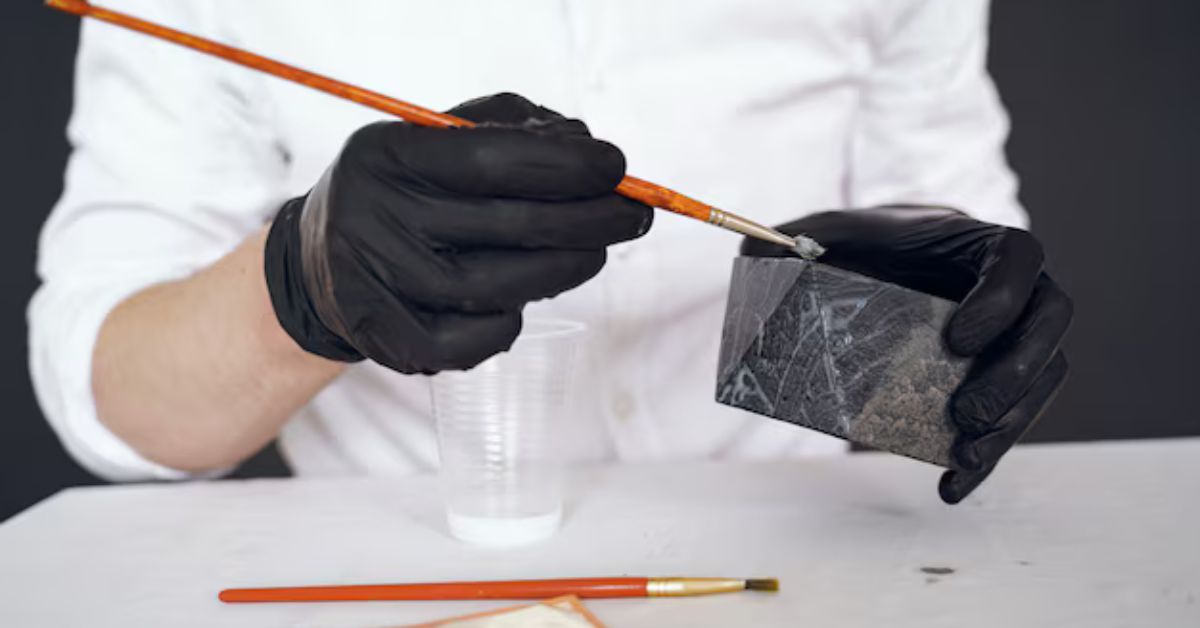These days, the statement “material is being tested” is growing more and more significant in a variety of industries, including manufacturing, electronics, aircraft, and construction. Testing materials guarantees that they fulfill the necessary requirements for safety, performance, and durability. The success of engineering projects, product designs, and general safety compliance now depend heavily on this approach.
Materials are put through a variety of tests in order to evaluate their mechanical, chemical, and physical characteristics. These tests aid in predicting how materials will respond to various stresses, environmental factors, and long-term use. Testing offers vital information that aids engineers and manufacturers in making defensible decisions regarding any material, be it metal, plastic, composite, or another.
This article will examine the significance of material testing, the various test kinds, the most recent advancements in the industry, and the ways in which the procedure affects sectors like healthcare and construction. We will also examine the most recent developments in material testing to guarantee the appropriateness and quality of the materials.
The Need for Material Testing in Contemporary Industries: The Reasons for Testing Materials
In contemporary engineering and industry, material testing is essential. It ensures that the performance, safety, and durability requirements are met by the materials utilized in a variety of applications. The following are some of the justifications for testing the material:
1. Maintaining Safety Regulations
Safety is the main justification for the importance of material testing. To avoid catastrophic failures, materials used in medical equipment, automobiles, aircraft, and construction must adhere to strict safety regulations. Building materials, for instance, need to be resilient to long-term wear and tear, severe weather, and earthquakes. Likewise, non-toxic, long-lasting, and dependable materials must be used in the production of medical devices.
2. Enhancing the Performance of Products
Manufacturers are always working to create goods that perform better in the cutthroat market of today. Businesses can identify the best materials for certain applications with the use of material testing. Manufacturers can improve the quality and effectiveness of their products by knowing how a material responds to various circumstances (such as changes in temperature or mechanical stress). To find the best alloys that can survive the harsh circumstances of high altitudes and fast acceleration, for example, aerospace experts conduct material testing.
3. Standard Compliance and Quality Assurance
To make sure that materials meet industry standards and laws, material testing is crucial. It assists businesses in verifying that the materials they use fulfill or surpass the quality standards established by national and international standards organizations. Material testing is an essential step in the quality control process, whether it is making sure that plastic components adhere to ISO requirements or that metals fulfill ASTM specifications.
4. Estimating the Durability of Materials
Predicting the material’s performance over time is another reason for testing it. Premature failures can be avoided by knowing the long-term behavior of materials that are subjected to a variety of pressures in any given application. Engineers can estimate maintenance needs, forecast a material’s lifespan, and identify when a material would need to be replaced or repaired with the use of testing. For sectors where the cost of material failure is frequently significant, including construction, automotive, and energy, this predictive power is crucial.
5. Economic Effectiveness
By ensuring that the appropriate materials are selected for the appropriate application, material testing helps to maximize manufacturing costs. Because of inefficiency, product failure, or the need for costly repairs and replacements, choosing the wrong materials might result in higher costs. In the long run, producers can save a lot of money by using the best materials from the beginning.
Material Testing Types
The field of material testing is vast, and many kinds of tests are used based on The Material Is Being Testing and its intended application. The primary categories of The material is being testing consist of:
1. Testing via Mechanical Means
Mechanical tests evaluate a material’s strength, pliability, and resistance to stresses including shear, compression, and tension. Typical mechanical tests consist of:
A material’s tensile strength is determined by material is being testing its ability to stretch before breaking.
The hardness test evaluates a material’s ability to withstand scratches and indentations.
• Impact Test: Assesses a material’s ability to absorb energy from abrupt hits.
• Fatigue Test: Evaluates the material’s resistance to repeated loads or stress cycles.
2. Examination of Chemicals
Chemical tests assess a material’s composition and resistance to different chemicals, such as salts, acids, and alkalis. These tests guarantee that substances used in coatings, tanks, and pipelines won’t deteriorate when exposed to strong chemicals. Among the tests are:
• Corrosion Resistance Test: Assesses a material’s capacity to withstand corrosion in various scenarios.
• Chemical Composition Analysis: Determines the fundamental components of products to verify that they satisfy predetermined standards.
3. Examination of Heat
The way materials respond to temperature changes is measured by thermal testing. For materials used in high-temperature settings, such as engines, reactors, or electronics, this is especially crucial. Tests consist of:
• Thermal Conductivity Test: Evaluates a material’s capacity to transfer heat.
A material’s ability to expand or contract in response to temperature variations is measured by the Thermal Expansion Test.
• Heat Resistance Test: Determines whether a material is being testing can tolerate high temperatures without deteriorating.
4. Examination of the Environment
Environmental tests evaluate the durability of materials by simulating a range of environmental conditions, including severe temperatures, humidity, and UV exposure. Typical tests consist of:
The purpose of the UV Exposure Test is to ascertain how materials respond to extended exposure to ultraviolet (UV) light.
• Humidity Test: Evaluates how long a material will last in high moisture environments.
• Weathering Test: Evaluates how materials deteriorate over time by simulating natural weather conditions.
Developments in Material Testing
As technology advances, material is being testing always changing. Engineers and researchers are able to collect more accurate and comprehensive data about the materials they work with thanks to new testing techniques. Among the most recent developments are:
1. Material Testing using Nanotechnology
The Material Is Being Testing revolutionized by nanotechnology, which makes it possible to analyze materials at the atomic and molecular level. The special qualities of nanotubes, nanowires, and nanoparticles—such as increased strength, conductivity, and flexibility—are being investigated. The capacity to carry out experiments on such a small scale creates new opportunities in domains such as energy storage, electronics, and biotechnology.
2. Additive manufacturing and 3D printing
Rapid prototyping and material is being testing are now possible thanks to 3D printing. Before creating finished goods, manufacturers may now print material samples to evaluate their mechanical qualities, chemical makeup, and thermal performance. Lead times and material testing expenses have been greatly decreased as a result.
3. Intelligent Sensors And Automation
The accuracy and efficiency of material is being testing have significantly improved with the use of automation and smart sensors. Smart sensors enable real-time data gathering and analysis, giving engineers immediate feedback, while automated systems may do repetitive testing with little assistance from humans.
4. NDT, or Non-Destructive Desting
In industries where material samples are costly or challenging to replace, non-destructive testing (NDT) methods are becoming more and more common. These techniques, which enable the identification of internal defects without causing material damage, include eddy current testing, X-ray inspection, and ultrasonic testing. NDT is very helpful in the oil, automobile, and aerospace sectors.
Comparison of Material Testing Methods
To further clarify the range of material testing options, the following comparison chart provides a detailed breakdown of common material testing methods, their primary applications, and the key benefits.
| Test Method | Application | Key Benefits |
| Tensile Strength Testing | Metals, Polymers, Composites | Measures material elongation before failure. |
| Hardness Testing | Metals, Plastics, Ceramics | Quick, reliable, and cost-effective. |
| Impact Testing | Metals, Polymers | Assesses material’s ability to absorb sudden energy. |
| Corrosion Testing | Metals, Alloys, Coatings | Determines material resistance to corrosive environments. |
| Thermal Conductivity | Metals, Insulating Materials | Measures material’s ability to conduct heat. |
| UV Exposure Testing | Polymers, Coatings | Assesses material degradation from UV light. |
| NDT (Ultrasound Testing) | Metals, Welds, Composite Materials | Non-invasive, detects internal defects. |
Material Testing’s Future
The future of material testing will develop in tandem with technology. Even more advanced testing techniques that offer more profound insights into material properties are probably in store for the future. We may anticipate quicker and more precise predictive analytics in material testing as artificial intelligence (AI) and machine learning grow in popularity. This will enhance overall product reliability, optimize designs, and help discover new material varieties.
Conclusion: The Purpose of the Material Testing
To sum up, the expression “material is being tested” captures a crucial aspect of contemporary manufacturing. For a variety of applications, material testing is essential to guaranteeing product performance, durability, and safety. Material testing techniques will change as technology develops further, offering more profound insights and empowering sectors to create more robust, dependable products. Material testing will keep spurring innovation in industries like healthcare and construction, making sure that the materials we use now can handle the problems of the future.







